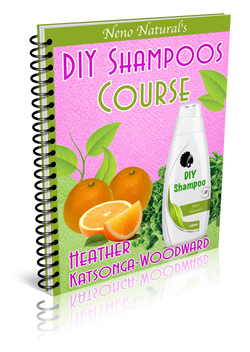
Firstly, what is a shampoo?
For fear of stating the obvious, a shampoo is an acidic product (pH 4 to 6) designed to clean hair by removing dirt, oils, grease and other product build-up. Traditionally, shampoos have foamed up but with the recent uptick in people wanting milder and milder shampoos there are some shampoos in the market that are so mild they barely foam at all. I hate those! I think my hate is buried in the fact that the very first non-foaming shampoo I bought (Honeysuckle Rose by Aubrey Organics) was so watery it was basically just a fragranced water IMHO! I felt I had been duped, ripped off, bamboozled! Had it been thick, creamy and non-foaming I may well have had a different opinion. Importantly, note that foam has nothing to do with cleaning power - foaming is a purely cosmetic factor that was added to shampoos because it appealed to people so much - it's part of the marketing. You can have a non-foaming shampoo that's way stronger than one that foams. Anyway, at a base level a shampoo has:
These are the different shampoos you can buy or even make at home: 
DAILY USE SHAMPOO
Has a very low concentration of surfactants (typically 8 to 15%) - this makes it very mild and hence suitable for daily use. However, us kinky haired girls don't need to wash our hair daily. My husband has straight greasy hair so I make him his own custom daily use shampoos. CONDITIONING SHAMPOO OR 2-IN-1 SHAMPOO This contains conditioning (cationic) ingredients or silicones that give hair a conditioned/ silky/ detangled feel. It does not necessarily contain moisturizing ingredients. MOISTURIZING SHAMPOO Contain ingredients that soften hair, these are called emollients. They include things like oils and butters. A moisturizing shampoo is normally creamy. It does not have to contain conditioning ingredients. CLARIFYING SHAMPOOS Strong shampoos with no conditioning (cationic) ingredients. Clarifying shampoos are designed to obliterate product build-up, personally, I find them too strong. It is generally recommened that you don't clarify your hair more than once every 4 to 6 weeks. ANTI-DANDRUFF SHAMPOO Anti-dandruff shampoos need to have ingredients that are scientifically known to fight dandruff. This takes them into the realm of "medical". You can't make an anti-dandruff shampoo at home because it is essentially a drug and would therefore have to come from an FDA approved lab in the US or whatever the equivalent is in your country. BABY SHAMPOO Designed to be much more "eye-friendly" so they don't hurt if they get into your baby's eyes. In addition, they are much weaker than adult shampoos. What about shampoo bars? Although they clean hair they are not shampoos at all because they are alkaline. Healthy hair is mildly acidic so I personally prefer not use these alkaline shampoo bars and instead prefer to just use proper shampoos. In summary, whether you are buying or making a shampoo, first, decide what type of shampoo you are going for. 
Get your FREE ebook on How To Grow Long, Healthy Natural Kinky or Curly Hair. You might also like: Ref: Buffalo (Chemistry of Shampoo), ChemistryViews.org (Shampoo Science) |
I now blog about wealth creation - so if you have any money questions meet me there, you can do all sorts of cool things like leave me a voicemail.
By Heather Katsonga-Woodward
I was a natural hair blogger and mixtress living between London & Chicago from 2012 to 2017. I always thought I was 4C but some say 4B; images below - you decide! Heather xx Categories
All
Archives
November 2016
|









